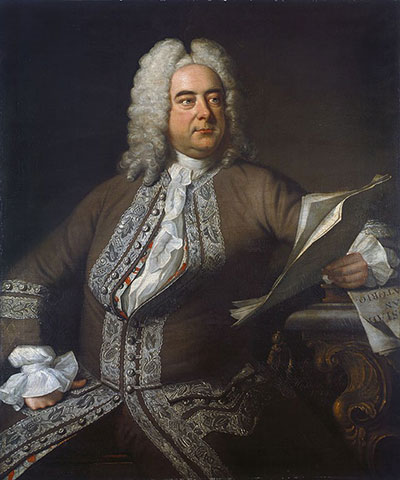 Each Advent, many churches and community choirs host the beloved tradition of a “Messiah” sing-a-long. The libretto – or text – is full of paraphrased Old Testament references to the birth of Christ and prepares listeners for a Christmas mindset.
Each Advent, many churches and community choirs host the beloved tradition of a “Messiah” sing-a-long. The libretto – or text – is full of paraphrased Old Testament references to the birth of Christ and prepares listeners for a Christmas mindset.
Although G.F. Handel’s “Messiah” is undoubtedly the most well-known oratorio in history and hugely popular in England and Germany, the genre actually originated in Italy. During the Counter Reformation, St. Philip Neri (1515-95), who wrote the rule for the Congregation of the Oratory, believed the faithful could benefit from prayers, songs, and even concerts of sacred music in the vernacular. An oratory is where such practices were held and where the word “oratorio” originates.
Initially, the genre of oratorio was small and, at times, used as a substitute for bombastic opera during the penitential season of Lent. To reflect the spirit of the season, the texts retold stories of sacrifice from the Old Testament. In the oratorio’s origins, the texts were either in Latin or the vernacular (and thus classified as oratorio latino or volgare, respectively). By the time of Handel’s “Messiah,” the length, instrumental and vocal resources had expanded monumentally, and the texts were in the language of the people.
The work was composed extraordinarily quickly: begun Aug. 22, 1741, and completed less than a month later on Sept. 14. To conserve space at the premiere, women were advised not to wear hoops in their gowns and men were asked to leave their swords at home.
“The Messiah” is in three parts, with the first part being the Christmas section. Unusual for the genre, no specific named characters appear in this part. For instance, there is no role for the Blessed Mother or St. Joseph. Instead, Charles Jennens, who also provided Handel with the text for several other oratorios, paraphrased parts of the Bible to narrate the story.
“Rejoice Greatly,” a soprano solo, is a Da Capo Aria, a three-part form with texts truncated from the Book of Zechariah (Zech 9:9-10): “Rejoice greatly, O daughter of Zion! Shout, O daughter of Jerusalem, behold thy King cometh unto thee. He is the righteous Savior, and He shall speak peace unto the heathen.” The first section begins in B-flat major, a tonality associated with hope, clearly appropriate here.
An instrumental theme opens the work and introduces the melody that will be repeated upon the soprano’s entrance. The singer repeats the word “rejoice” numerous times in the first section, with Handel enhancing the mood by adding many, many notes on reiterations of the word.
The second part of the aria provides musical contrast and begins on the text, “He is the Righteous Savior.” The joyful major key is replaced by minor with the volume lessened considerably. The final part returns to the opening in the original key and, although unnotated, the singer is expected to embellish or add extra notes, making the music simultaneously familiar and new.
Handel’s devotion to his craft was legendary. He once threatened to hold a soprano out the window until she agreed to perform the music the way he intended (she wisely acquiesced). His high standards and unwillingness to compromise contributed substantially to the history of music. His works in the sacred genre, particularly his beloved
“Messiah,” are a wonderful soundtrack to celebrate the Feast of the Nativity and prepare our hearts and minds for the coming of Our Savior.
Christina L. Reitz, Ph.D., is a professor of music at Western Carolina University in Cullowhee.
Watch it online
Watch a rendition of Handel’s “Messiah” by the Staatskapelle Dresden, conducted by Alondra de la Parra in 2019.

